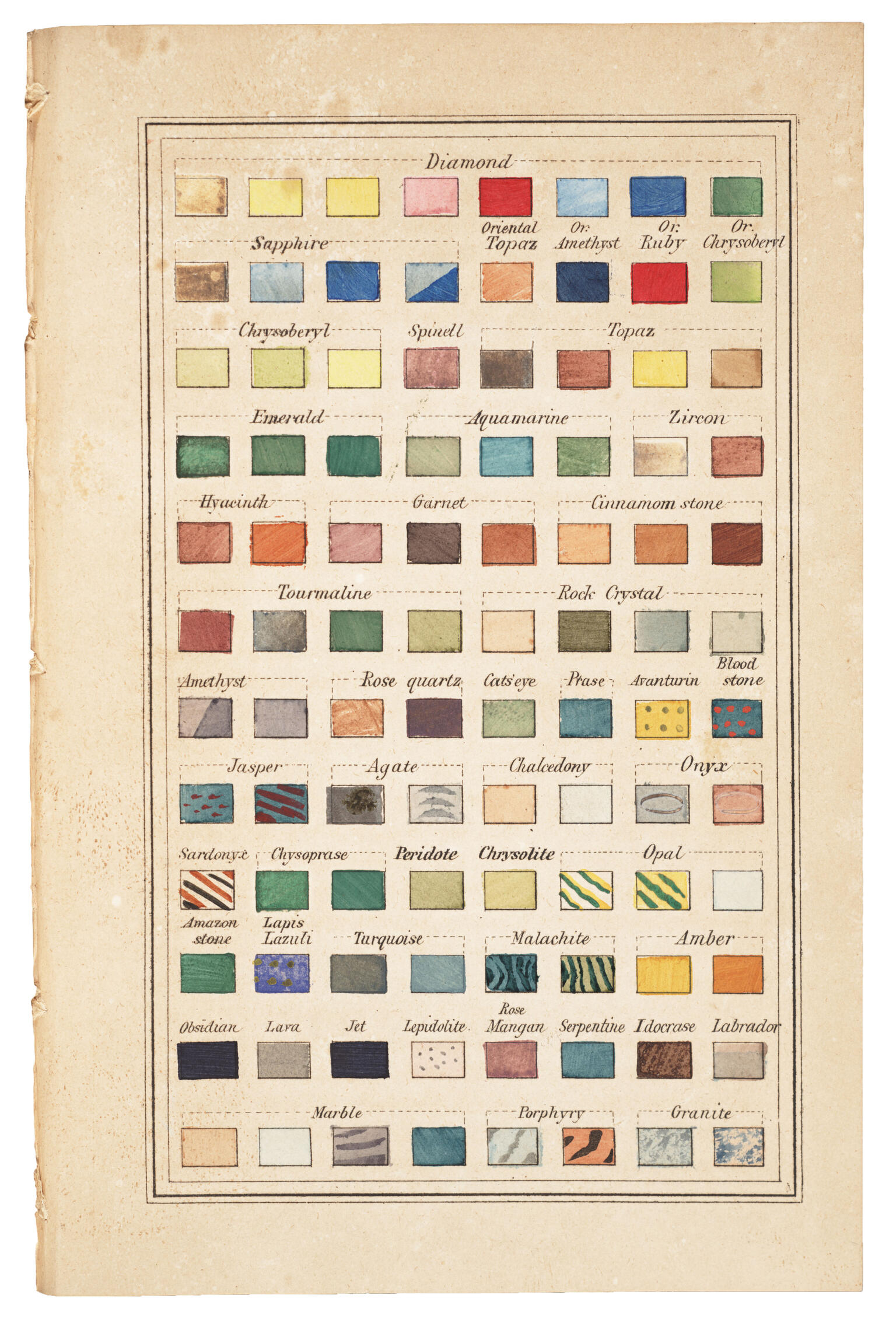Chart of Gems from A Popular Treatise on Gems
Lewis Feuchtwanger
1838
This chart displaying the colors of gems and minerals is from A Popular Treatise on Gems and Minerals by Lewis Feuchtwanger, a German Jewish immigrant to the United States, a doctor who was also well known for his scientific research as a metallurgist and gemologist. The book was first published in 1859 and was reprinted in several editions.
Credits
Courtesy of the Smithsonian Institution Libraries, Washington, DC.
Published in: The Posen Library of Jewish Culture and Civilization, vol. 6.
You may also like
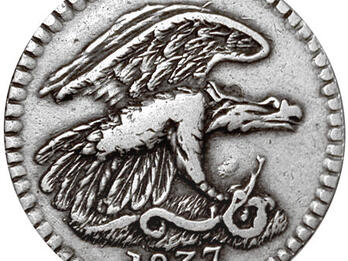
Feuchtwanger Cent
In 1829, German Jewish metallurgist Lewis Feuchtwanger attempted to introduce a metal alloy known as “German silver” into U.S. coinage, promoting this nickel silver as a less-expensive alternative for…
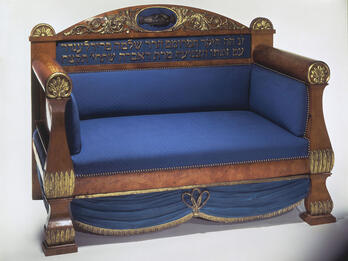
Wedding Sofa
This Biedermeier-style sofa from Danzig, with birch veneer over pine, may have been commissioned on the occasion of a marriage. The oval on the seat back contains an image of clasped hands, and the…
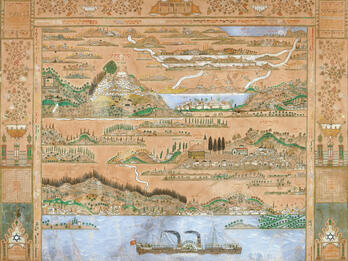
Shiviti
This remarkable illustration is at the same time a shiviti—traditionally, a decorative plaque bearing the verse: “I am ever mindful of the Lord’s presence”—and a topographic map of the land of Israel…

Medal Commemorating Sir Moses Montefiore
In 1840, thirteen leaders of the Jewish community in Damascus were arrested and imprisoned because of an accusation of ritual murder. Appeals from the local Jewish community reached Jewish communities…
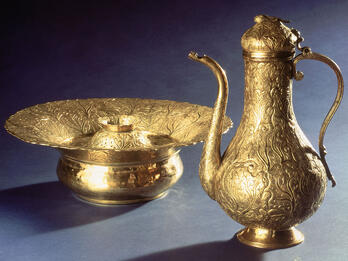
Ewer and Basin
This ewer and basin from Turkey were used to wash hands ritually during the Passover seder. Owned by the Benguiat family, a large and prominent Sephardic family in the Ottoman Empire, the objects…
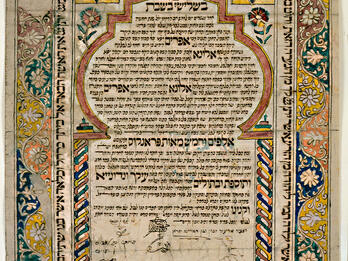
Ketubah (Oran)
A ketubah is a religious and legal contract of marriage. Traditionally, it outlines the conjugal and economic conditions of a marriage and is written in Aramaic. This ornate ketubah from Oran, Algeria…
Engage with this Source
Creator Bio
Lewis Feuchtwanger
Lewis Feuchtwanger was a German doctor and metallurgist who immigrated to New York City in 1829, where he opened a pharmacy and practiced medicine. He became well known for his collection of minerals and for attempting to introduce nickel silver into U.S. coinage, drawing attention to the combustibility of saltpeter. He was a member of scientific societies in the United States and abroad.
You may also like

Feuchtwanger Cent
In 1829, German Jewish metallurgist Lewis Feuchtwanger attempted to introduce a metal alloy known as “German silver” into U.S. coinage, promoting this nickel silver as a less-expensive alternative for…

Wedding Sofa
This Biedermeier-style sofa from Danzig, with birch veneer over pine, may have been commissioned on the occasion of a marriage. The oval on the seat back contains an image of clasped hands, and the…

Shiviti
This remarkable illustration is at the same time a shiviti—traditionally, a decorative plaque bearing the verse: “I am ever mindful of the Lord’s presence”—and a topographic map of the land of Israel…

Medal Commemorating Sir Moses Montefiore
In 1840, thirteen leaders of the Jewish community in Damascus were arrested and imprisoned because of an accusation of ritual murder. Appeals from the local Jewish community reached Jewish communities…

Ewer and Basin
This ewer and basin from Turkey were used to wash hands ritually during the Passover seder. Owned by the Benguiat family, a large and prominent Sephardic family in the Ottoman Empire, the objects…

Ketubah (Oran)
A ketubah is a religious and legal contract of marriage. Traditionally, it outlines the conjugal and economic conditions of a marriage and is written in Aramaic. This ornate ketubah from Oran, Algeria…


